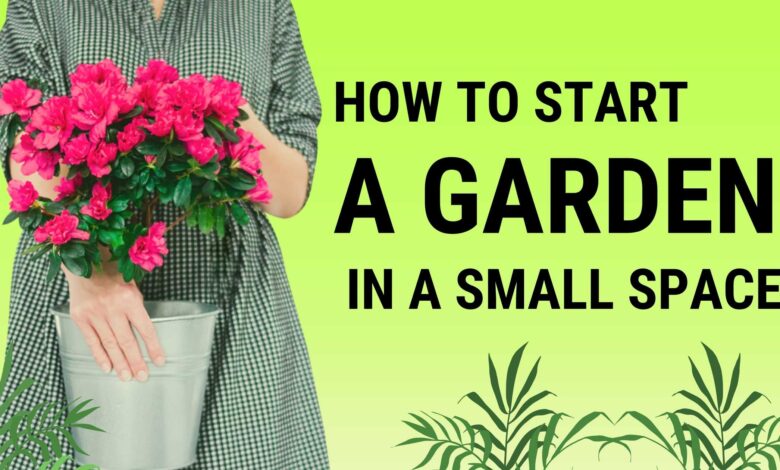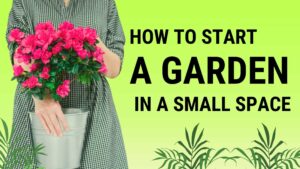How to Start An Amazing Garden in a Small Space In 9 Steps


Garden: Gardening has many benefits, from providing fresh produce to improving mental health. However, living in a city or with limited open space can be a barrier to starting a garden. Fortunately, with a little creativity and planning, you can grow a vegetable garden even in a small space. Here are some tips to help you create a garden on a small plot of land.
Table of Contents
Evaluate Your Location
The first step in creating a garden in a small space is to assess the space available. Whether you have a balcony, a small patio or a sunny window, knowing the dimensions and features of your space will help you make the right decision. Consider things like the sun, wind direction, and how much space you have in the container or pot.
Choose The Right Plants
For small gardens, choosing the right plants is very important. Choose plants that are suitable for container gardening and do not require a large root system. Herbs (such as basil, mint, and parsley), leafy greens (such as spinach and lettuce), and hearty vegetables (such as cherry tomatoes and radishes) are good choices. Additionally, consider planting dwarf plants or large shrubs to enhance your space.
Use Vertical Space
When horizontal space is limited, think vertically. Maximize your vertical space with wall mounted plants, hanging baskets and vertical garden systems. Trellises and shelves can also support climbing plants such as beans, peas and cucumbers. Vertical gardening not only increases your planting space, but also creates a beautiful wall of greenery.
Choose The Right Container
Containers play an important role in small space gardening. Choose pots, pots and containers that suit the plants you want to grow. Make sure the cisterns are good enough to prevent pooling. Light and durable materials such as plastic or fabric plant bags are good choices for balconies and patios because they are easy to move and set up.
Increase The Soil And Fertilizer
Good quality soil is important for container gardening. Use a well-draining potting mix to warm the roots while maintaining moisture. Because container plants depend on the nutrients available in their environment, they need to be fertilized regularly. Use organic fertilizers or compost to enrich the soil and promote good plant growth.
Set up a Water System and Make it Perfect
Proper watering is essential to the success of a small garden. The soil in containers dries out faster than in the ground, so they need to be watered regularly. Consider using a personal watering can or irrigation system to maintain optimal hydration levels. In addition, water in the morning or evening to reduce evaporation and ensure that the plant receives proper irrigation.
Use Companion Planting
Companion planting is planting different plants together for mutual benefit. This technology increases the space and improves the health of the plant. For example, planting basil next to tomatoes makes it taste better and repels pests. Research the right plants to make the most of a small space and create a beautiful garden environment.
Regular Maintenance
Maintaining a small garden requires constant attention. Prune plants to encourage healthy growth and prevent overcrowding. Monitor for pests and diseases and resolve problems early to avoid wider problems. Check soil moisture and nutrient levels regularly, and adjust watering and fertilizing methods as needed.
New gardening solutions
Find creative solutions to beautify your small space garden. Hydroponics is a method of growing plants without soil and is very useful in small plots of land. Small hydroponic systems can be installed on a table or stand. Additionally, consider using recycled materials such as used pallets, cans, and bottles to create unique, eco-friendly planters.
Also Read: Creative ways to Display Family Photos
Conclusion
Starting a garden in a small space is a rewarding activity that produces fresh produce, beautifies the environment, and is profitable.
By assessing your site, choosing the right plants, using a vertical space, choosing the right containers, preparing the soil and fertilizer, implementing a good irrigation system, using planting friends, taking care of the garden and finding new solutions, there is no limit to its size.
It is possible to create a productive garden. With a little creativity and hard work, even the smallest space can be turned into a thriving and productive garden.




